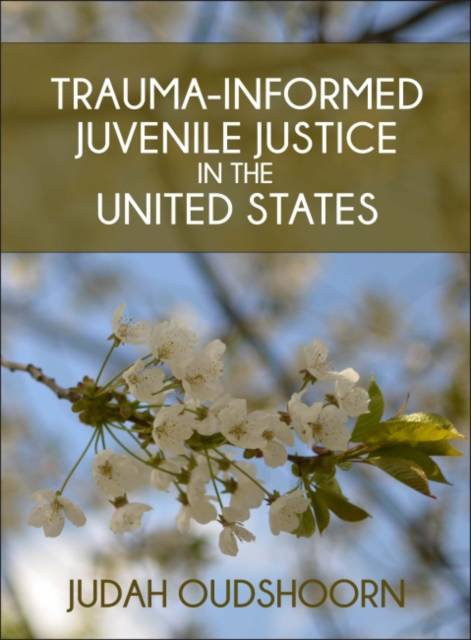
- Afhalen na 1 uur in een winkel met voorraad
- Gratis thuislevering in België vanaf € 30
- Ruim aanbod met 7 miljoen producten
- Afhalen na 1 uur in een winkel met voorraad
- Gratis thuislevering in België vanaf € 30
- Ruim aanbod met 7 miljoen producten
Zoeken
€ 92,95
+ 185 punten
Omschrijving
Although most young offenders have experienced some form of trauma, the juvenile justice system in the United States is ill-equipped to deal with the effects of trauma, and its focus on punishment often further traumatizes youth. This text presents a much-needed alternative to the current system, advocating trauma-informed interventions based on principles of healing and restorative justice.
Judah Oudshoorn addresses the context of youth offending by examining both individual trauma-including its emotional, cognitive, and behavioural effects-and collective trauma. The volume tackles some of the most challenging problems facing juvenile justice in the United States today, especially the ongoing cycles of intergenerational trauma caused by patriarchal violence and the over-incarceration of African American, Latino, and Native American youth.
The author deftly demonstrates how a trauma-informed approach to juvenile justice can work toward preventing crime and healing offenders, victims, and communities. Featuring a foreword written by Howard Zehr, case stories from the author's own work with victims and offenders, questions for reflection, glossaries of key terms, and lists of recommended readings, this engaging text is the ideal resource for students in the field of juvenile justice.
Judah Oudshoorn addresses the context of youth offending by examining both individual trauma-including its emotional, cognitive, and behavioural effects-and collective trauma. The volume tackles some of the most challenging problems facing juvenile justice in the United States today, especially the ongoing cycles of intergenerational trauma caused by patriarchal violence and the over-incarceration of African American, Latino, and Native American youth.
The author deftly demonstrates how a trauma-informed approach to juvenile justice can work toward preventing crime and healing offenders, victims, and communities. Featuring a foreword written by Howard Zehr, case stories from the author's own work with victims and offenders, questions for reflection, glossaries of key terms, and lists of recommended readings, this engaging text is the ideal resource for students in the field of juvenile justice.
Specificaties
Betrokkenen
- Auteur(s):
- Uitgeverij:
Inhoud
- Aantal bladzijden:
- 320
- Taal:
- Engels
Eigenschappen
- Productcode (EAN):
- 9781551309484
- Verschijningsdatum:
- 1/09/2016
- Uitvoering:
- Paperback
- Formaat:
- Trade paperback (VS)
- Afmetingen:
- 170 mm x 244 mm
- Gewicht:
- 512 g

Alleen bij Standaard Boekhandel
+ 185 punten op je klantenkaart van Standaard Boekhandel
Beoordelingen
We publiceren alleen reviews die voldoen aan de voorwaarden voor reviews. Bekijk onze voorwaarden voor reviews.











